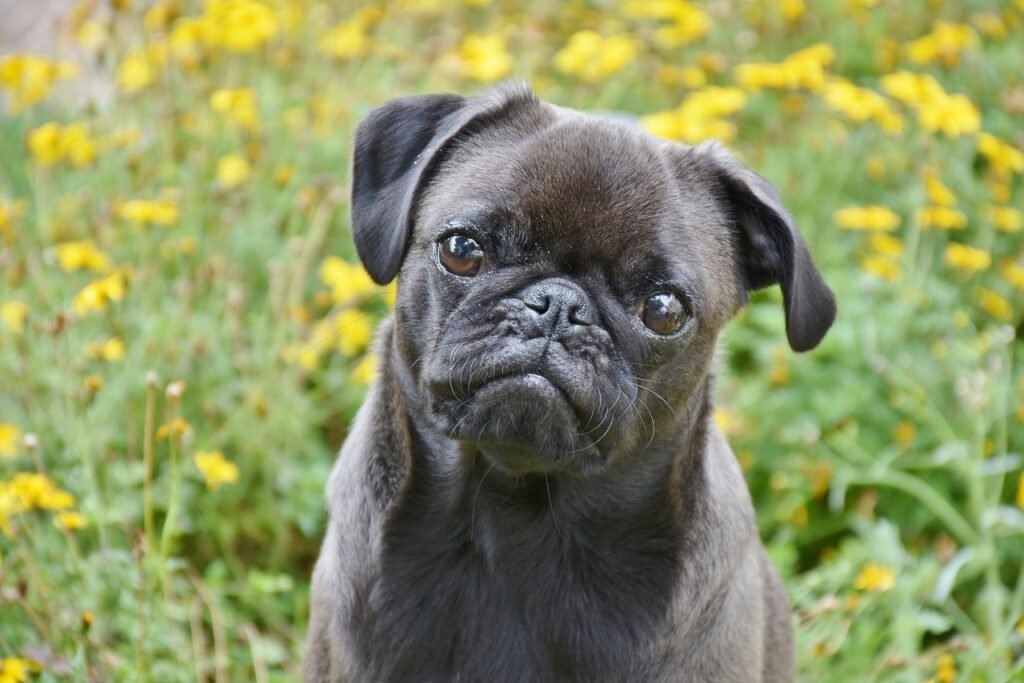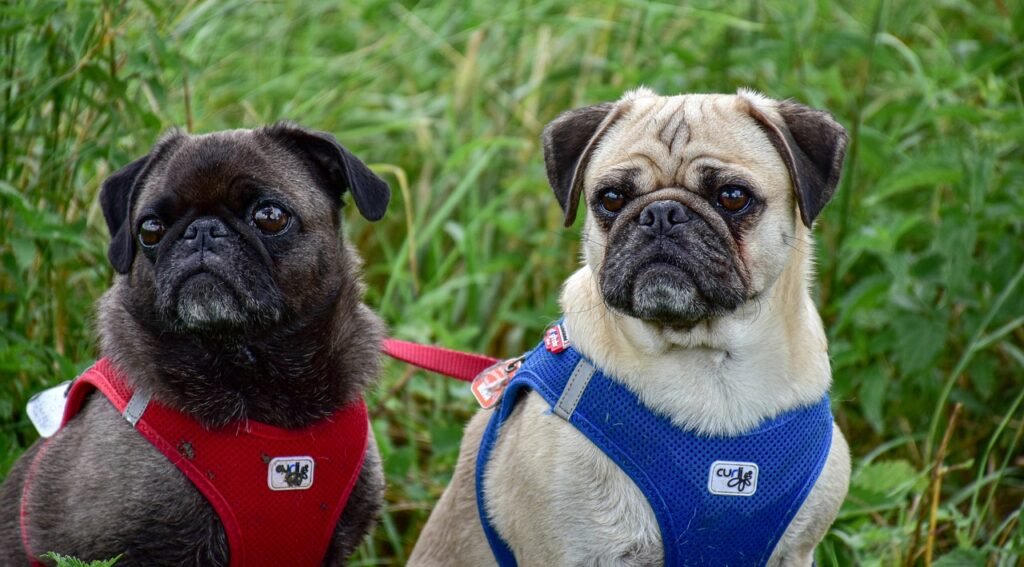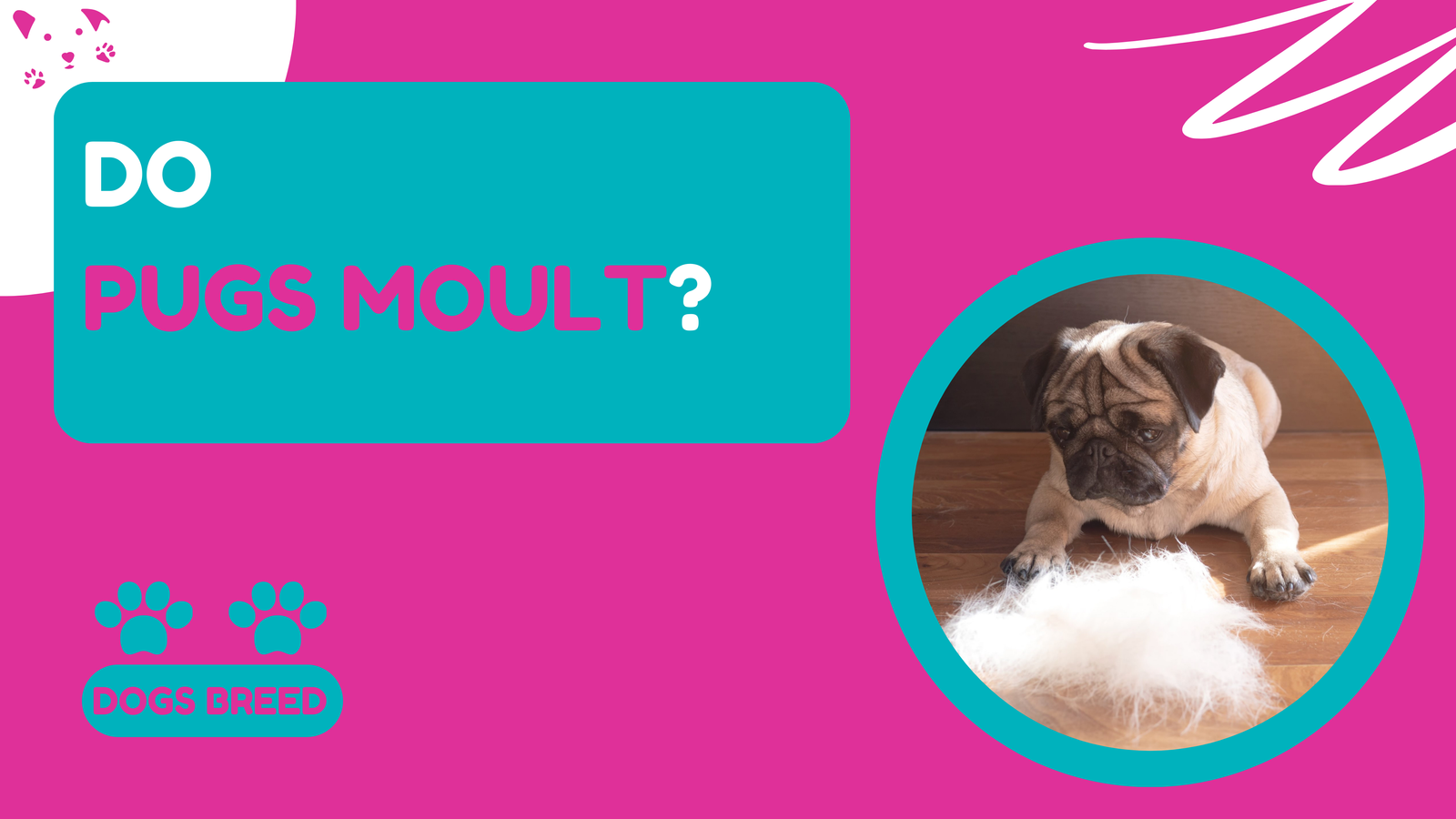If you’re a proud Pug parent, you might have found yourself wondering, “Do Pugs moult?” These charming little dogs, known for their distinctive wrinkled faces and playful personalities, bring joy and laughter into our homes.
However, understanding their grooming needs, especially when it comes to moulting, is crucial for keeping them healthy and happy.
What is Moulting?
Moulting, also known as shedding, is a natural process where dogs lose old or damaged hair to make way for new growth.
It’s an essential part of their skin and coat health. While all dogs shed to some extent, the amount and frequency can vary widely among different breeds.
Do Pugs Moult?
Yes, Pugs do moult. They are known for shedding quite a bit, which might come as a surprise given their short coat.

Pugs have a relatively high shedding rate compared to other breeds, and their moulting can be quite noticeable, especially during certain times of the year.
Types of Pug Coats
Pugs can have either a single coat or a double coat. A single coat means they have one layer of fur, while a double coat means they have two layers – a soft undercoat and a coarser topcoat. Most Pugs have a double coat, which contributes to their frequent shedding.
Why Do Pugs Moult?
Moulting in Pugs, like in other dogs, is driven by biological and environmental factors. It’s their body’s way of removing old or damaged hair.
Seasonal changes also play a role, with many Pugs shedding more in the spring and fall to adapt to changing temperatures.
How Much Do Pugs Moult?
Pugs are considered heavy shedders. Their small size and short hair can be deceiving, but they can shed quite a bit, often compared to larger, long-haired breeds.
Factors such as genetics, diet, and overall health can influence the amount of shedding.
Identifying Moulting in Pugs
You can usually tell when your Pug is moulting by the amount of hair left behind on furniture, clothing, and floors.
Common areas for hair loss include the back, sides, and legs. If you notice excessive hair loss or bald patches, it might be a sign of a health issue that needs veterinary attention.
Pug Grooming Tips
Regular grooming is essential to manage your Pug’s moulting.
Here are some tips:
- Brushing: Brush your Pug at least twice a week to remove loose hair and prevent matting. Use a slicker brush or a bristle brush for best results.
- Bathing: Bathe your Pug every three to four weeks. Use a gentle dog shampoo to keep their skin healthy and coat clean.
- Nail Trimming and Ear Cleaning: Regularly trim your Pug’s nails and clean their ears to prevent infections.
Best Tools for Grooming a Moulting Pug
Having the right tools can make a big difference:
- Brushes and Combs: Slicker brushes and bristle brushes are great for Pugs. A deshedding tool can also help reduce the amount of loose hair.
- De-shedding Tools: Tools like the Furminator are specifically designed to reduce shedding by removing loose hair from the undercoat.
- Grooming Products: Invest in high-quality dog shampoos and conditioners that promote a healthy coat.
Diet and Nutrition’s Role in Moulting
A balanced diet is crucial for your Pug’s overall health and can impact the amount they shed. Ensure they get the right nutrients, including omega-3 and omega-6 fatty acids, which promote a healthy coat. Supplements like fish oil can also be beneficial.
Health Issues Related to Excessive Moulting
Excessive moulting can sometimes indicate health problems such as:
- Allergies: Food or environmental allergies can cause skin irritation and excessive shedding.
- Skin Conditions: Issues like dermatitis or infections can lead to hair loss.
- Parasites: Fleas, ticks, and mites can cause itching and increased shedding.
If you notice signs of excessive moulting, consult your vet to rule out any underlying health issues.
Preventing Excessive Moulting

While you can’t stop your Pug from moulting, you can manage it:
- Regular Grooming: Stick to a consistent grooming schedule.
- Environmental Factors: Keep your home clean and free of allergens that might affect your Pug’s skin.
- Stress Management: Reduce stress in your Pug’s environment as it can lead to increased shedding.
Comparing Pug Moulting to Hypoallergenic Breeds
Pugs are not hypoallergenic, and they do shed quite a bit. If you have allergies, you might want to consider a hypoallergenic breed that sheds less. Check out our detailed guide on hypoallergenic breeds to learn more.
Longevity and Moulting in Pugs
As Pugs age, their moulting patterns can change. Older Pugs might shed more due to changes in their skin and coat health. For more on Pug longevity, visit our article on Pug lifespan.
FAQs: Do Pugs Moult?
How often do Pugs need to be brushed?
Pugs should be brushed at least twice a week to manage shedding and keep their coat healthy.
Can diet affect how much a Pug moults?
Yes, a balanced diet rich in omega-3 and omega-6 fatty acids can promote a healthy coat and reduce shedding.
What is the best brush for a Pug?
A slicker brush or a bristle brush is ideal for Pugs. A deshedding tool can also help manage loose hair.
Do Pugs moult all year round?
Pugs shed throughout the year, but they may shed more heavily during seasonal changes in spring and fall.
How can I reduce my Pug’s moulting?
Regular grooming, a balanced diet, and reducing environmental stress can help manage and reduce your Pug’s moulting.
Conclusion
Understanding your Pug’s moulting habits is key to keeping them comfortable and your home cleaner. Regular grooming, a balanced diet, and monitoring their health can make a significant difference. Embrace the moulting process as part of Pug ownership, and you’ll enjoy a happy, healthy companion.


5 thoughts on “Do Pugs Moult? Unveiling the Shedding Secrets of This Adorable Breed”